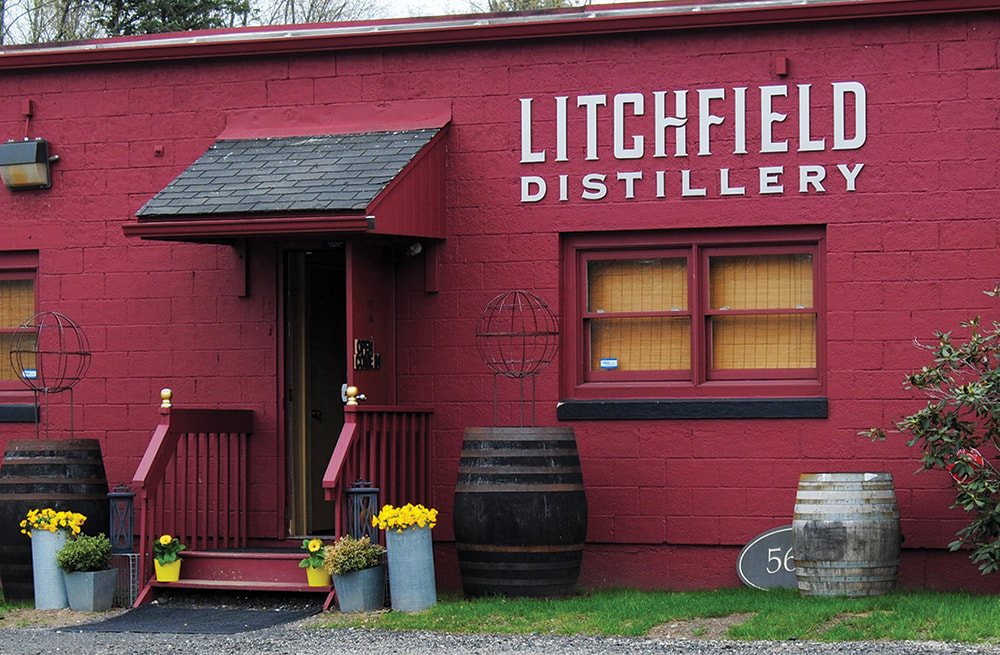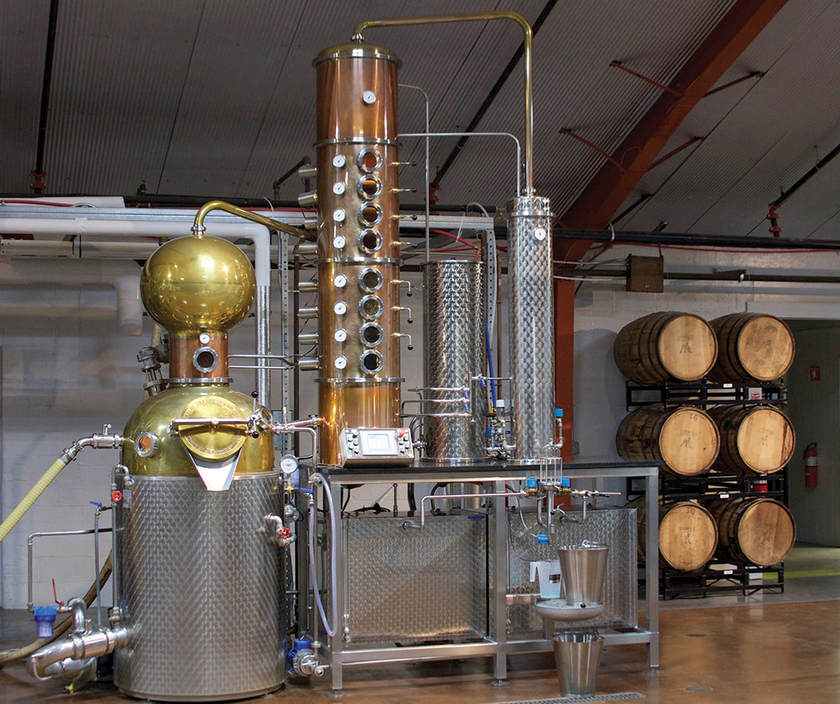|
Golf Kitchen had the pleasure of touring a farm to table bourbon distillery “Litchfield Distillery,” located in Litchfield County, Connecticut in May 2017. Here is what brothers David, and Jack Baker had to tell us about their passion for home-grown bourbon, gin, and vodka. GK: Tell us about the evolution of Litchfield Distillery. Jack: Our family business is Crystal Rock Bottled Water Company. We have been in operation since 1914. My brother David has always had solid background knowledge on whiskey, so we decided to footprint the brown spirit, bourbon. It’s been a four-year plan to date. We’ve been distilling for about two and a half years now. GK: How did this evolve into a second family business? David: My brothers Jack, Peter and I, were looking for something to do together, and we had read some articles about the growthof distilleries out on the West Coast, and we didn’t think that trend had started here on the East Coast yet. I went out to Seattle and toured a bunch of distilleries, and came back really enthusiastic. We began looking at buildings and equipment and all of a sudden we had a building, the equipment showed up, and we thought we better learn how to do this! GK: What’s the reception you’re getting with your products? David: I think people, especially in Connecticut, love a local product. It’s seen as local in Massachusetts and New York as well. A lot of individuals from all over visit this part of the state, it’s a special place, and we love hearing their stories. GK: Tell us about the process. What makes your bourbon, gin, and vodka unique? Jack: For a bourbon to be considered bourbon it has to be at least 51 percent corn. We’re 70 percent corn, 25 percent rye and5% barley. Bourbon has to have at least 51% corn, distilled at less than 160 proof, barreled at 125 proof or less in a new oak charred container, and bottled at 80 proof or above. Our gin base is 90% corn and 10% barley. This mix creates a high-quality neutral-flavored alcohol that is then redistilled with the botanicals to get the gin flavor. Gin has to have juniper berries to achieve that classic gin flavor. Our vodka is 100% corn. Vodka is made from just about anything that will ferment. Distillation has to be above 190 proof so that there’s no distinctive character, taste, or color. We consider our vodka to have its own unique characteristics that make it a little bit more special. For the gin, we make a vodka first and then redistill it with the juniper. Our unique blend of botanicals contains juniper, coriander, elderberry, and citrus, all of which creates complexity and a distinctive signature taste profile. GK: What came first, the bourbon, the gin, or the vodka? David: The bourbon and the gin came first, we didn’t intend to make vodka. When our brands got some high acceptance from our consumer base, they were asking when we would make a vodka. In time we gave our customers what they requested. GK: Where do you get your corn and rye germination? David: Our corn and rye come from Lion Rock Farm in Sharon, Connecticut, about 18 miles away. For our bourbon, 95% of it is Litchfield County grown. We’re looking to source a local barley. The barley needs to be malted, which means it is then moistened, germinated, and dried. That creates an enzyme in the seed that converts starches to sugar. All these grains in their dried germinated stages arestarches, and they need to be cooked at certain temperatures and pH’s with the enzymes to convert starches to sugars. GK: Do you do a steeping process with your vanilla? David: We’re doing an extraction from the vanilla beans. We take our two-year bourbon, our straight bourbon, and we put the vanilla extraction into the bourbon to bring the flavor to a certain level, and then we place a Madagascar vanilla bourbon bean in each bottle, which is always evolving. The vanilla bean will continue to add flavor. GK: Do you anticipate doing any other kind of flavoring after vanilla? David: We do a coffee flavor, which goes back to our other company Crystal Rock-Cool Beans Coffee. We worked with our roaster in Hartford to develop a profile grind for it; a course ground Arabica coffee bean. We steep for 24 hours, and we use cold brew coffee to do the dilution instead of just distilled water. GK: The equipment is pristine. David: Thank you. Most of it is from Germany; the main still is a Mueller. As you know, in the United States we had prohibition, and spirit-still manufacturers stopped making this type of equipment. So the European still evolved while our industry stalled for a while. German craftsmanship is second to none, the technology is impeccable, and it’s producing splendid spirits for us. GK: Tell us about your still. Jack: It’s a 500 L. still. They call it a hybrid still because it uses two different types of distillation together. The left side is known as the traditional pot still. That makes a great flavored bourbon. The right side, the column, is a column still, invented in the mid-1920s. That gives us control over the proof of the product that we're going to produce. We do three distillations a day. We distill bourbon to 150 proof and our gin and vodka bases to 185 proof.GK: Jack, tell us a bit about the charring process. Jack: The barrels have to be brand new and charred on the inside. We char by igniting the barrels with coal and let it burn to our specifications. Charring brings out the smokiness. The charred coal helps caramelize the sugars on the inside of the barrel, so right behind the char, there is what's called a caramelized sap ring, and that gets dissolved by the whiskey and brings out vanilla, butterscotch, and caramel flavors. GK: Tell us about the bottle. David: We found a bottle that we thought would fit our image and we call that a flask-style bottle. But if you look at it, it's got a nice chunk of thick glass at the bottom, which is part of what makes it a quality product. GK: The logo? David: We hired Miles Finch Innovation to help us design the logo. We were struggling to capture the right perspective and attitude in the illustration, so we eventually had one of our employees push a barrel across the floor and took about 200 pictures of him until we got the profile we liked. Then the agency created the icon artwork from that, which ultimately became our logo. GK: It looks like you might be able to hold events here, do you? David: Yes, thank you, to us, it's like no other. We give tours and tastings. We are getting astonishing acceptance from the the surrounding communities, and our guests are becoming more and more frequent. Jack: Do you know what the angel's share is? GK: No, I have no idea. Jack: There are the angel's share and the devil's cut. We lose about 15 percent to evaporation, so the alcohol that leaves the barrels and goes to the heavens is called the angel's share. What stays in the barrel is what's called the devil's cut. ~ by Leo Bushey For more infomation about Litchfield Distillery: www. litchfielddistillery.com
0 Comments
Your comment will be posted after it is approved.
Leave a Reply. |


